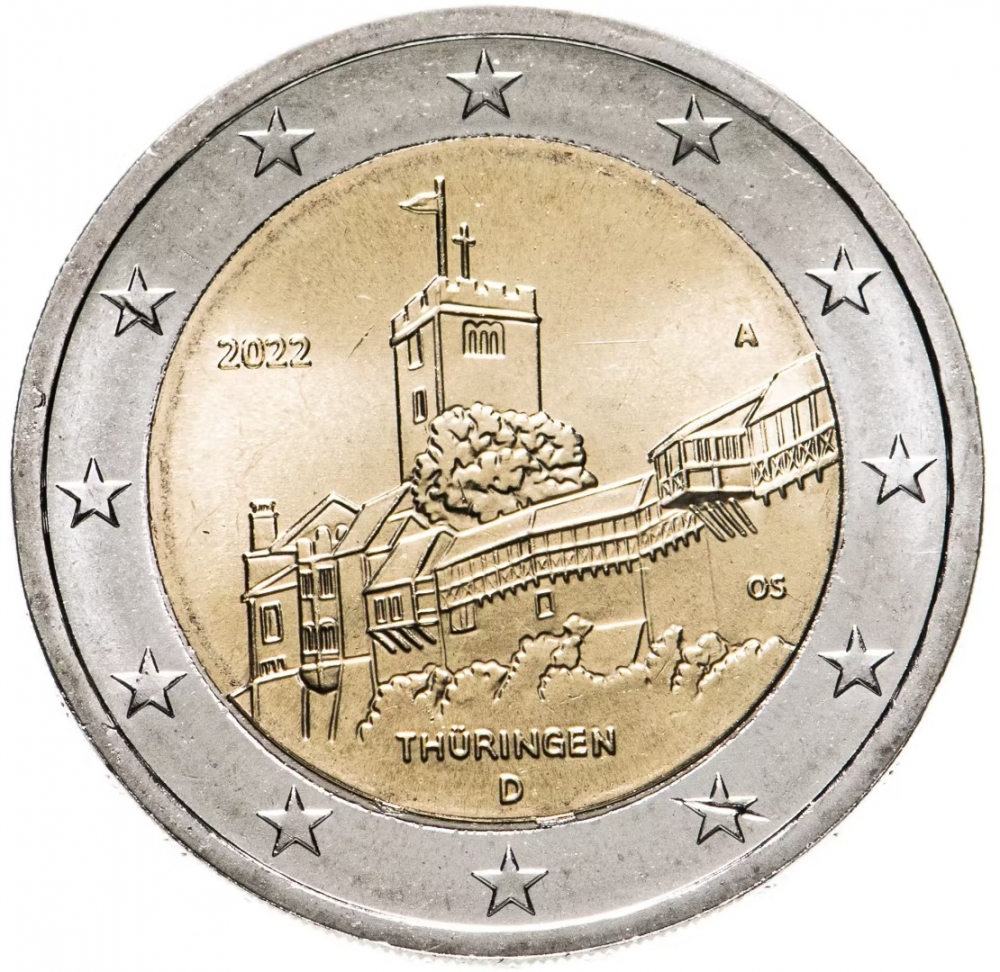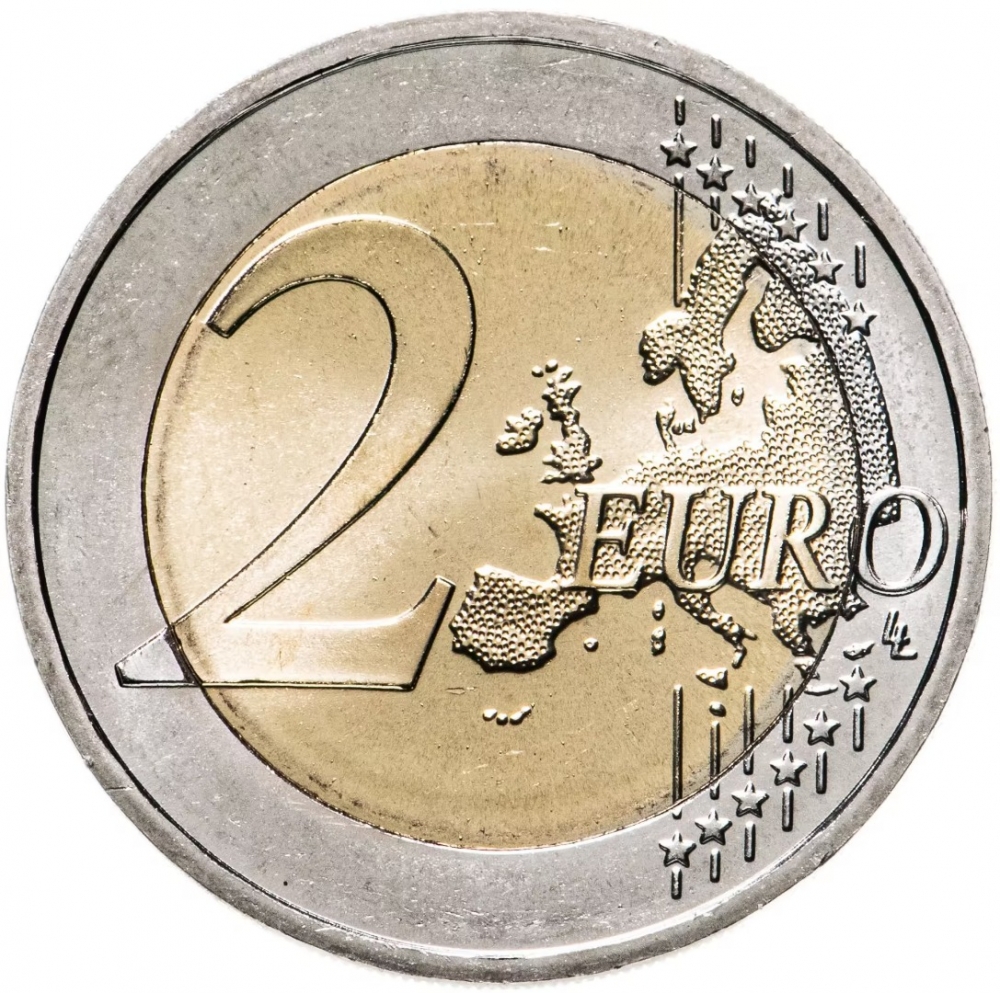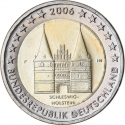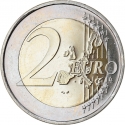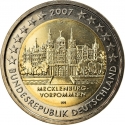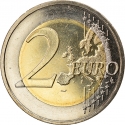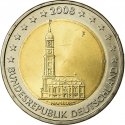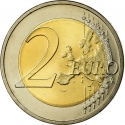You are about to finish your registration. Please check your mailbox (including spam folder). There should be a letter with a confirmation link. Check setting to make sure that your e-mail address is correct.
Send letter againDescription
The Federal Republic of Germany has 16 states (German: Bundesländer). Since 2006, Germany issues every year a Bundesländer coin for a specific state that has that’s year’s presidency of the Bundesrat.
Thuringia (German: Thüringen), officially the Free State of Thuringia, is located in central Germany. Erfurt is the state capital and largest city, while other major cities include Jena, Gera, and Weimar. Thuringia is surrounded by the states of Bavaria, Hesse, Lower Saxony, Saxony-Anhalt, and Saxony.
Most of Thuringia is within the watershed of the Saale, a left tributary of the Elbe, and has been known as "the green heart of Germany" (das grüne Herz Deutschlands) from the late 19th century due to the dense forest covering the land. Thuringia is home to the Rennsteig, Germany's most well-known hiking trail, and the winter resort of Oberhof, making it a well-known winter sports destination. Thuringia is also home to prominent German intellectuals and creative artists, including Johann Sebastian Bach, Johann Wolfgang von Goethe, and Friedrich Schiller.
Thuringia was established in 1920 as a state of the Weimar Republic from a merger of the Ernestine duchies, except for Saxe-Coburg, but can trace its origins to the Frankish Duchy of Thuringia established around 631 AD by King Dagobert I. After World War II, Thuringia came under the Soviet occupation zone in Allied-occupied Germany, and its borders altered to become contiguous. Thuringia became part of the German Democratic Republic in 1949, but was dissolved in 1952 during administrative reforms, and its territory divided into the districts of Erfurt, Suhl and Gera. Thuringia was re-established in 1990 following German reunification, with slightly different borders, and became one of the Federal Republic of Germany's new states.
Obverse

|
Depicts Wartburg Castle in Eisenach. Date on the top left and mintmark (A for Berlin, D for Munich, F for Stuttgart, G for Karlsruhe, J for Hamburg) on the top right. Engraver's initials on the right. State name and national identifying mark (D for Deutschland / Germany) below. 2022 |
|---|---|
Reverse

|
A geographical map of Western Europe spans the outer ring and inner core on the right side of the coin. The inscription 2 EURO is superimposed over the map of Europe, with the numeral “2” located in an open field representing the eastern Atlantic Ocean. 2 EURO |
| Edge |
UNITY AND JUSTICE AND FREEDOM in German, Germany's national motto and the beginning of Germany's national anthem, followed by the Federal Eagle EINIGKEIT UND RECHT UND FREIHEIT |
Characteristics
| Type | Commemorative Issue (Circulating) |
| Material | Bi-Metallic |
| Ring | Cupronickel |
| Center | Nickel Brass |
| Weight | 8.5 g |
| Diameter | 25.75 mm |
| Thickness | 2.2 mm |
| Shape |
|
| Alignment | Medal |
| Mints |
Bavarian Central Mint (D) Berlin State Mint (A) Hamburg Mint (J) Karlsruhe State Mint (G) Stuttgart State Mint (F)
|
